Scandinavian Interior Design is one of the most influential design styles in the world, with no signs of waning in popularity.

March 24th, 2022
The Scandinavian style is an interior design movement which originated in the three countries of Scandinavia: Denmark, Norway and Sweden. Inspired by modernism, Scandinavian design is characterized by a minimalistic emphasis on simplicity, functionality, lighting and cleanliness. Typical Scandinavian interiors will feature simple furniture pieces that create clean lines and highlight empty floor space.
The Scandinavian interior design movement picked up momentum during the 1930s across Northern Europe and continued to spread globally throughout the 50s. It skyrocketed onto the interior design scene and ever since has slowly evolved to include pops of colour as well as eye-catching features, though the most identifiable feature remains its minimalism.

Now, Scandinavian design is often confused with Nordic design. This is because Nordic design encompasses Iceland and Finland as well as Denmark, Norway and Sweden. Some argue that these terms are interchangeable, but there are a few subtle differences between Nordic and Scandinavian design.
Nordic vs Scandinavian Design: Nordic design focuses slightly more on comfort and expression, with brighter colours and raw natural materials as common eye-catching features in their interiors. Scandinavian design, by contrast, tends to have a more neutral or monochromatic colour palate and aims for a contemporary look rather than the timelessness of Nordic design. However, these design styles are very similar and the differences are understated enough that one can easily be recognized for the other.
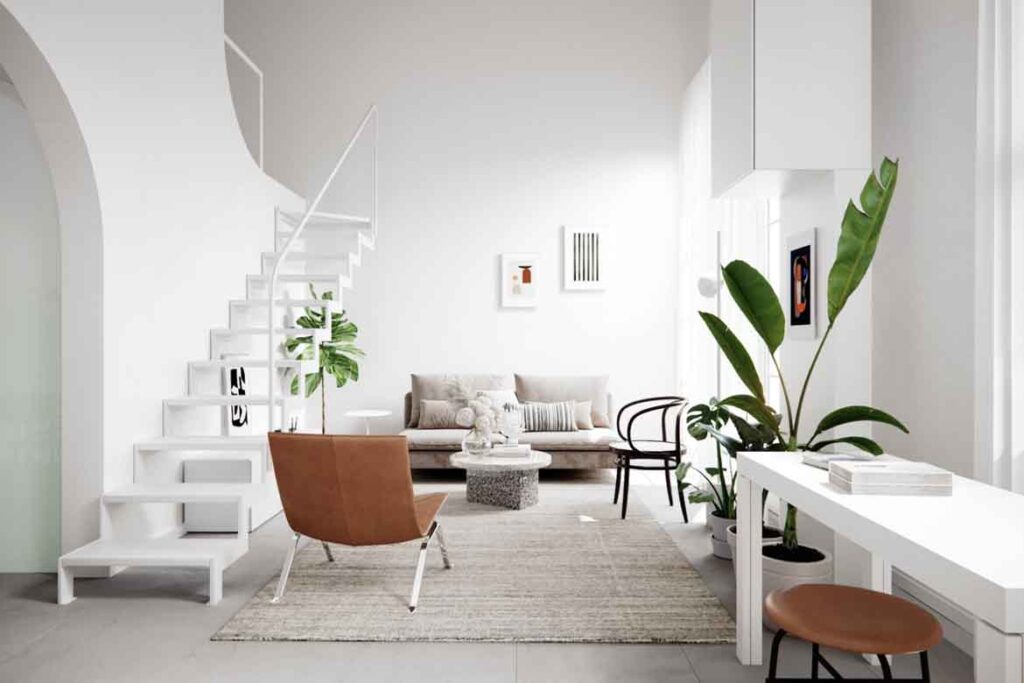
Scandinavian interior design has become particularly popular in Singapore over the past decade. It is particularly well suited to HDB flats because the functionalist, light-promoting style creates a spacious and open atmosphere that makes the most of the apartment’s floor space.
The most common characteristics of Scandinavian design lend well to a HDB setting. Minimalism helps to keep the apartment free from clutter, making it seem larger and well-organized. Functionalist elements such as space-smart furniture also help to reduce clutter, often providing storage without forcing you to sacrifice any floor space or aesthetic appeal.

The use of raw natural materials like wood accents and hardwood flooring compliments the contemporary design by adding a twist of rustic elegance. Hardwood floors are a signature feature of Scandinavian design and if you are committed to a Scandinavian renovation, this is the perfect place to start.
For those who can’t afford a genuine hardwood floor, perhaps consider installing a floating floor, a hybrid option, or laminate. See here for an outline of some of the best flooring styles suited to a Scandinavian-inspired renovation.
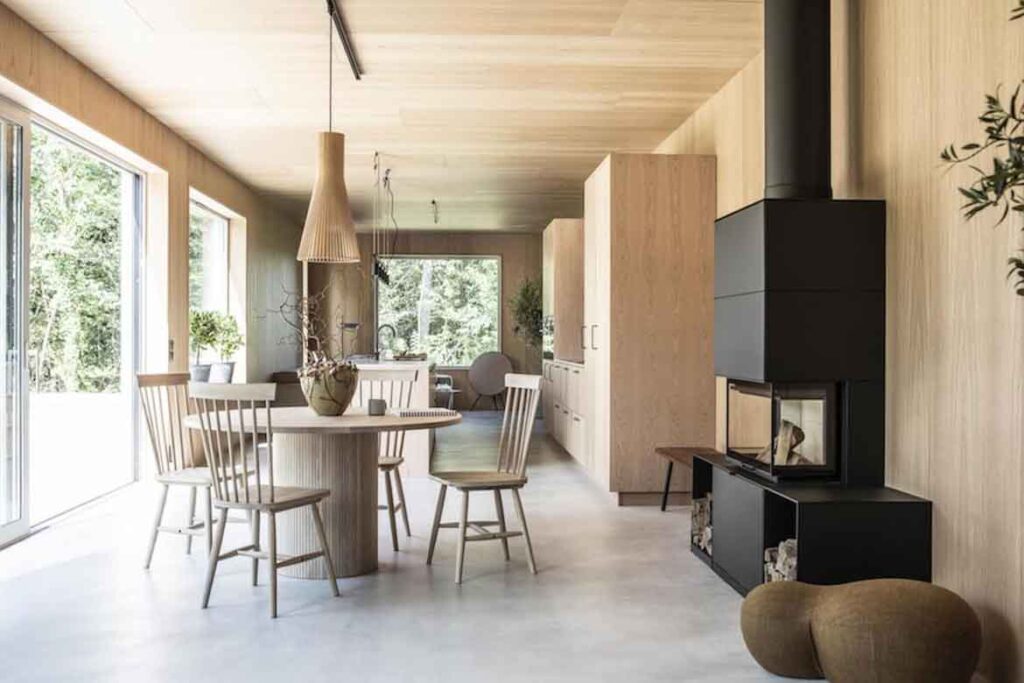
Colours and textiles are another important part of emulating the Scandinavian design atmosphere. As a method of coping with the cold climates, Scandinavian design evolved to maximize the light inside a room and keep it feeling as sunny as possible.
This extends not only to windows but also the colours of the room; lighter, pale colours like white are extremely popular in Scandinavian house designs because they reflect the light around the room to create a brighter and warmer effect. Modern bathrooms are almost all inspired by the Scandinavian style, with a monochromatic colour palate and organized storage.
5. Colours
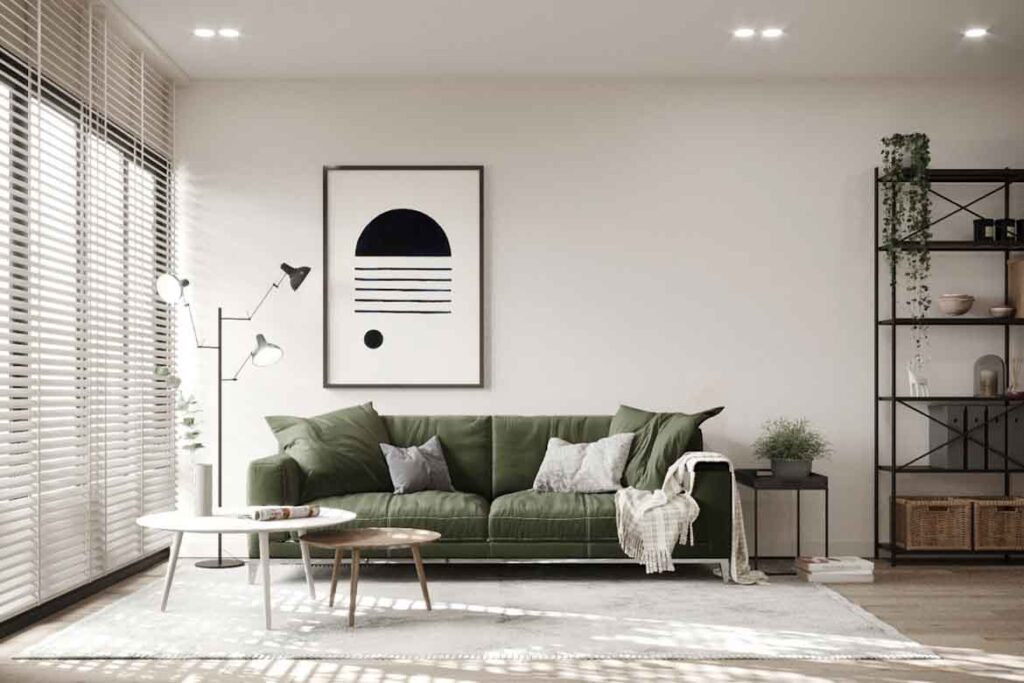
A subdued palate is not the same as a boring or colourless palate. Scandinavian-style décor has been criticized for appearing too cold or uninviting – but true Scandinavian designs will feature subtle touches of deep pale colours that enhance the colour of the room without undermining its simplicity.
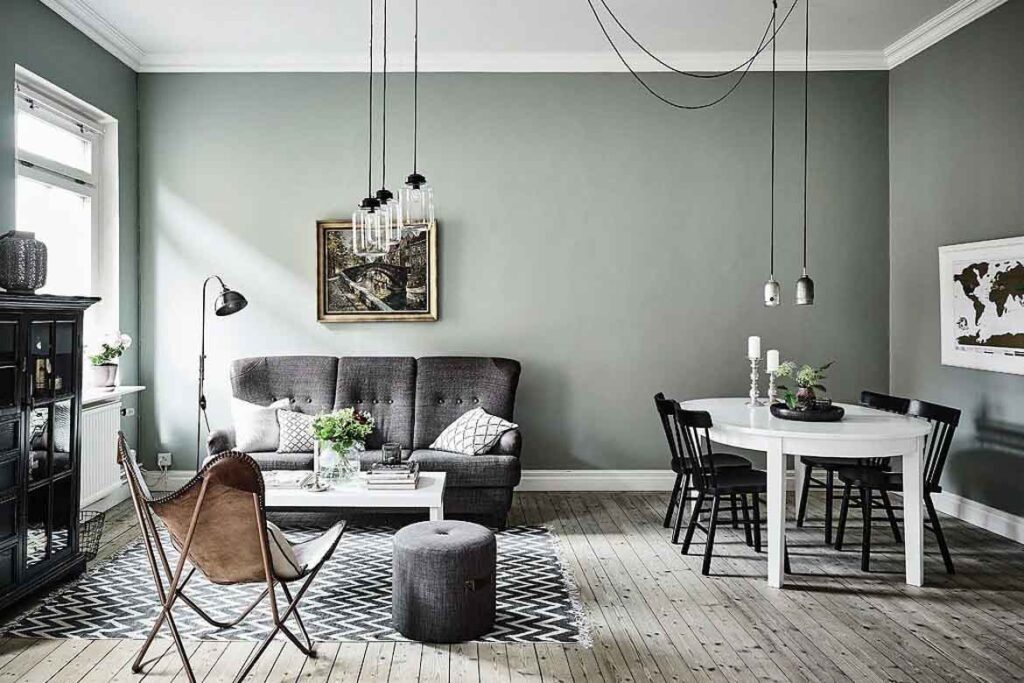
The most common colour used to enliven a Scandinavian interior is sage green, whether as a feature wall or even just coloured furniture and accents. The best part of this idea is that it is an affordable way to emulate the Scandinavian style, given that paint is generally inexpensive and available from most hardware stores.

4. Textiles
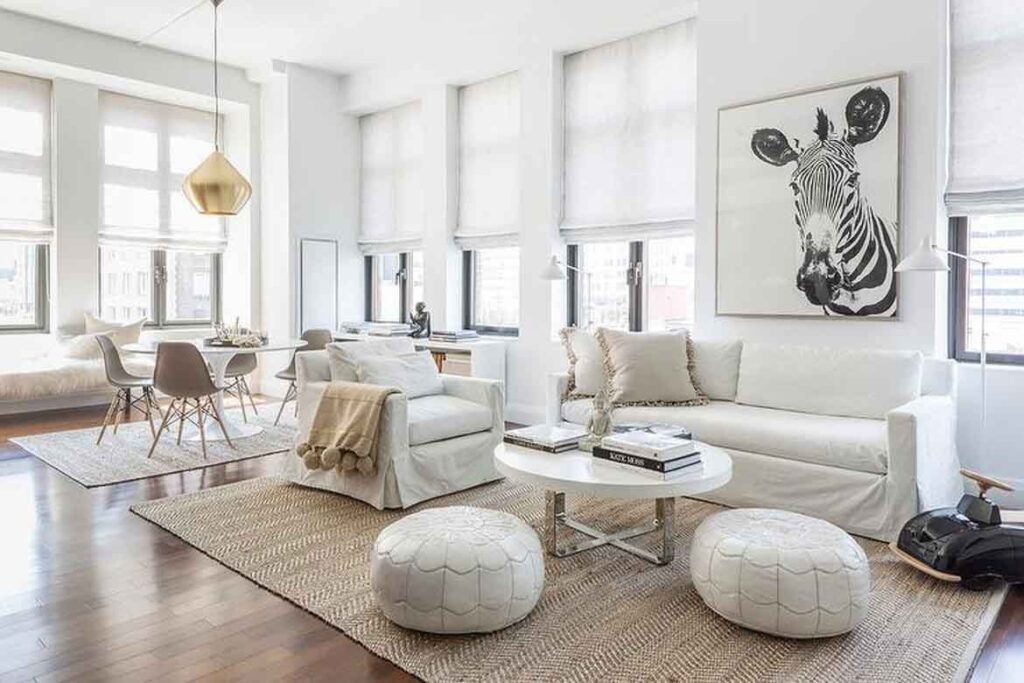
Another relatively affordable design idea characteristic of Scandinavian design is the use of textiles – most specifically, living room rugs. Rugs were a popular trend in Northern European countries for their practical benefit, because they help to keep the floor warm underfoot.

The types of rug most popular in Scandinavian design today is rough, minimalist, and generally has a hand-woven appearance. They usually lack colour and if they are patterned it will almost always be black and white, and with clean lines.
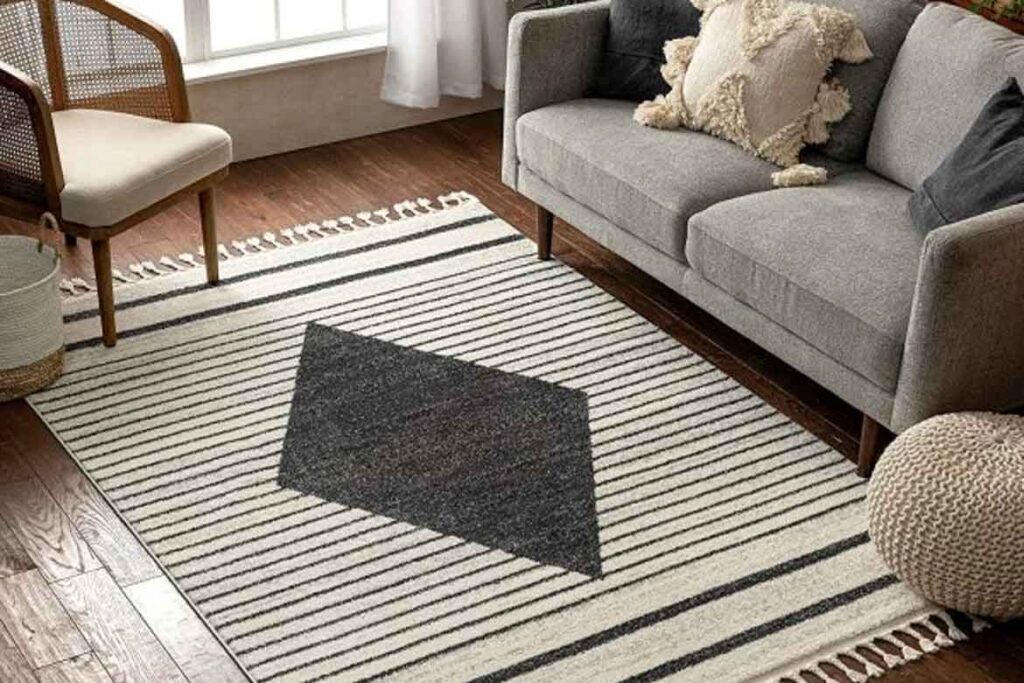
3. Functionalism

In the context of Scandinavian interior design, functionalism refers primarily to the furniture choice. Scandinavian functionalism focuses on presenting the practical in a beautiful way. Beautiful and functional furniture pieces such as couches, tables, wardrobes and beds are usually simple and non-bulky.

Often these pieces will have additional hidden storage aspects, as organization is a huge part of Scandinavian design culture. They will usually be tucked away next to the wall in the living room, kitchen, or bedroom, as a way to keep the floor feeling open and spacious.
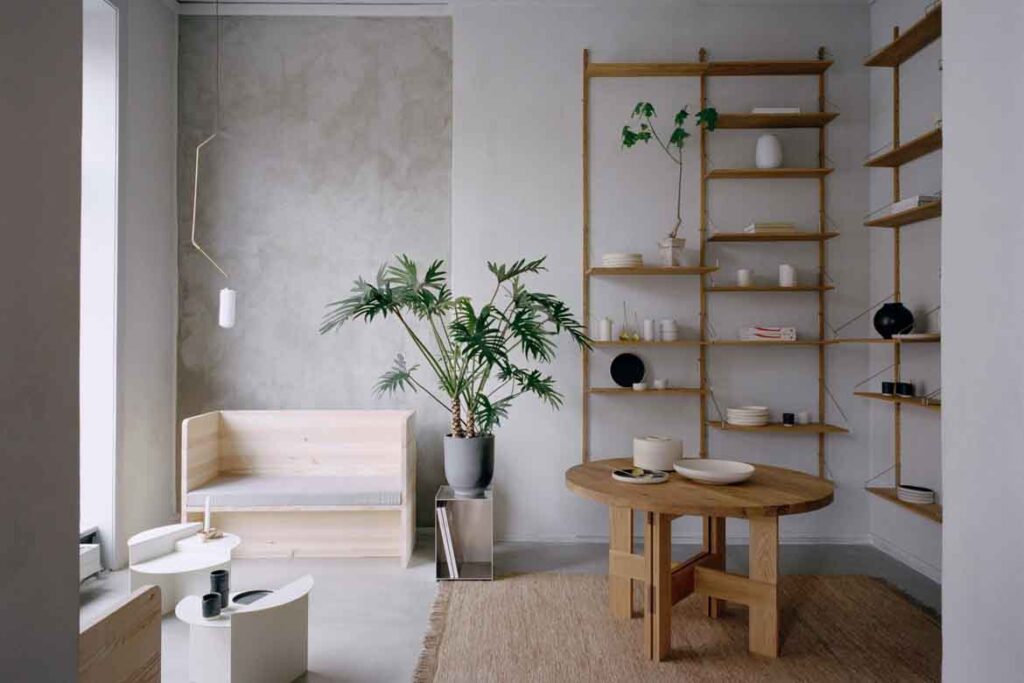
Scandinavian shelves are usually industrial bare-bones frames, rather than bulky solid wood. Floating shelves are also popular as they give a sleek, contemporary impression.
2. Light & Lines
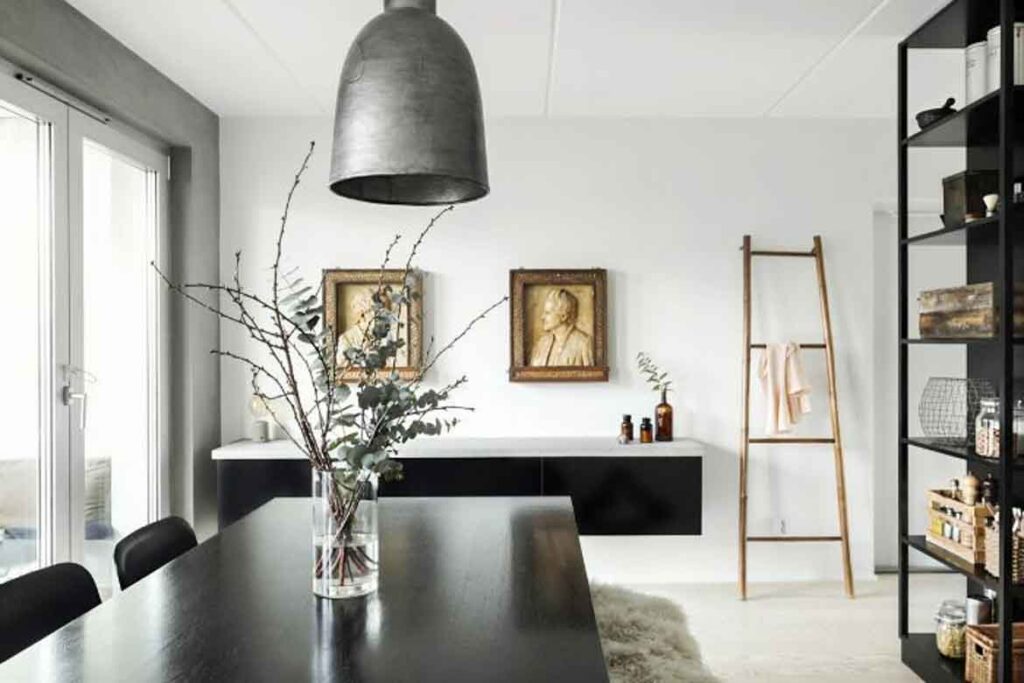
Perhaps one of the most iconic design features of the Scandinavian style is its ordered use of lines. These lines are usually created by the furniture pieces and it’s why you will rarely see a circular rug or table in traditional Scandinavian-inspired design.

A mix of horizontal and vertical lines created by the edges of furniture provides the room with structure and framing.

This creates a sense of distance between furniture pieces, making the room seem larger and emphasizing the negative space.

It also contributes greatly to the neat and orderly atmosphere that is such a crucial part of Scandinavian design.

1. Minimalism

Minimalism is the philosophy of Scandinavian design upon which all of the other elements must hang. First and foremost, Scandinavian interiors prioritize a lack of clutter.
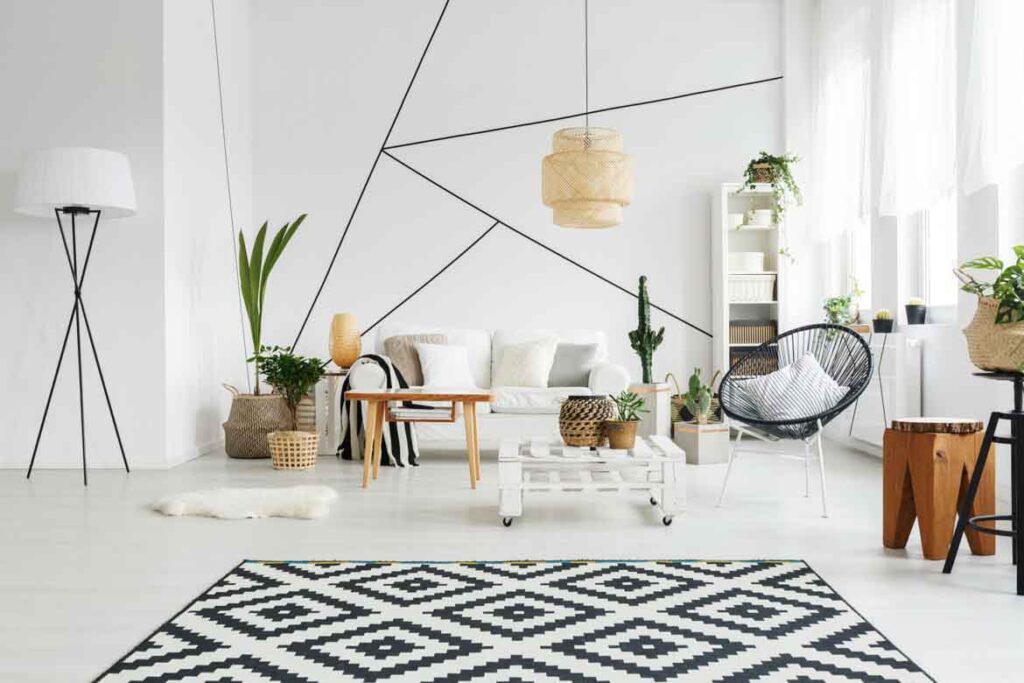
This is generally expressed with limited furniture pieces, simple storage units, and the emphasis on negative space. Wide-open and undecorated blank areas are a staple of the design, and without that this it would be hard to consider a room Scandinavian-inspired.
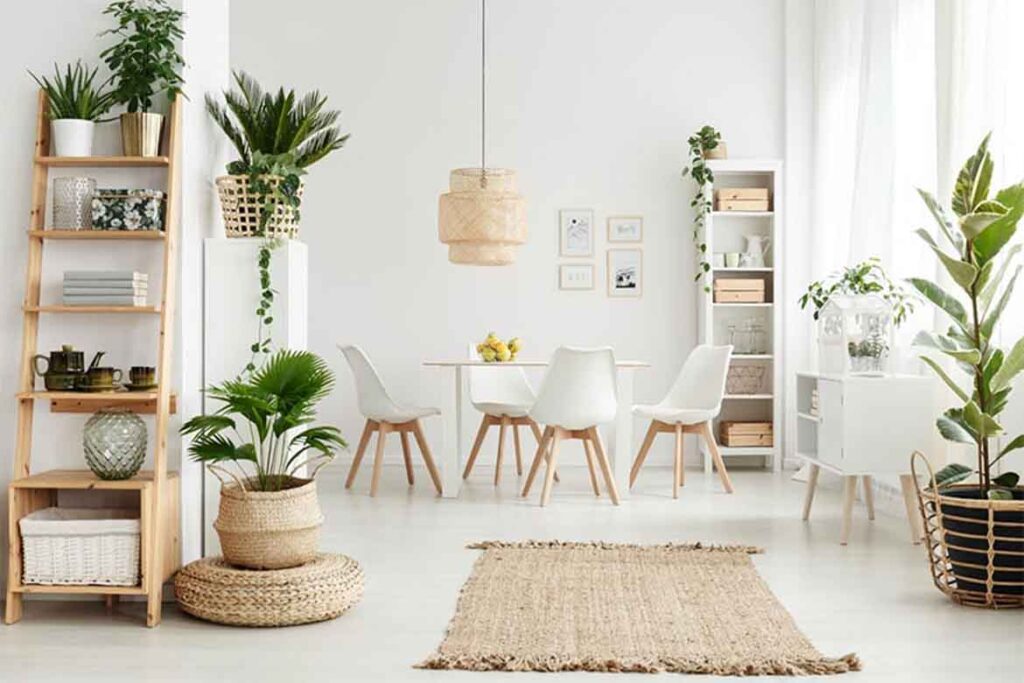
The true beauty of Scandinavian interior design comes from what it leaves out; space, simplicity and subtlety have no rival when it comes to modern interior design styles.

A searchable and comprehensive guide for specifying leading products and their suppliers
Keep up to date with the latest and greatest from our industry BFF's!

The Sub-Zero Wolf showrooms in Sydney and Melbourne provide a creative experience unlike any other. Now showcasing all-new product ranges, the showrooms present a unique perspective on the future of kitchens, homes and lifestyles.

Create a configuration to suit your needs with this curved collection.

Channelling the enchanting ambience of the Caffè Greco in Rome, Budapest’s historic Gerbeaud, and Grossi Florentino in Melbourne, Ross Didier’s new collection evokes the designer’s affinity for café experience, while delivering refined seating for contemporary hospitality interiors.
The internet never sleeps! Here's the stuff you might have missed

Dallas Rogers, Head of Urban Discipline at the School of Architecture, Design and Planning, University of Sydney, comments on the history of map-making in our cities.

Gray Puksand’s construction-focused facility at TAFE NSW responds to the critical need for a resilient Australian construction industry.